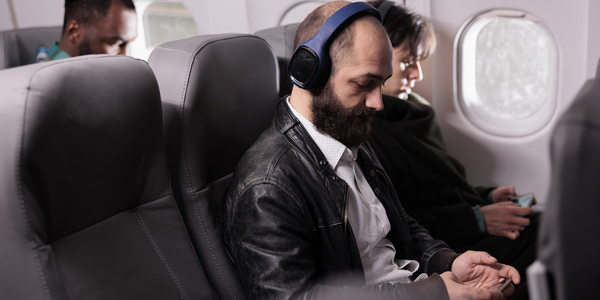[the_ad id=”6076″]
The thrill of air travel or adventurous activities like scuba diving and exposure to hyperbaric oxygen chambers can sometimes come at a cost – a discomfort known as “airplane ear.” In this blog, we’ll explore the underlying causes, symptoms, risk factors, and effective remedies for this common condition.
Pressure Imbalance: The Culprit Behind Airplane Ear
Airplane ear, technically termed ear barotrauma, occurs due to a disparity in pressure between the external environment and the middle ear. The middle ear is connected to the back of the throat by a narrow tube called the Eustachian tube. This tube helps regulate pressure and equalize the air pressure on both sides of the eardrum. However, during activities that involve significant pressure changes, such as air travel, scuba diving, hyperbaric oxygen therapy, or even exposure to explosions, the Eustachian tube may struggle to equalize the pressure adequately.
Diverse Triggers: From Altitude Changes to Explosive Impacts
While air travel is a primary cause of airplane ear, this discomfort can arise from various other sources as well. Scuba diving enthusiasts can experience ear barotrauma due to the rapid pressure changes underwater. Hyperbaric oxygen chambers, which are used for medical purposes, can also provoke similar discomfort. Even exposure to sudden explosions can lead to pressure imbalances that affect the ears.
The Telltale Symptoms: Discomfort, Pain, and Muffled Hearing
The symptoms of airplane ear are unmistakable and can range from mild discomfort to sharp pain. Individuals might report a feeling of fullness or pressure in the affected ear, accompanied by muffled hearing. In severe cases, pain can become quite intense, impacting the overall travel or diving experience. These symptoms usually manifest during ascent or descent, when pressure changes are most significant.
Understanding the Mechanism: Pressure and the Eardrum
To grasp the science behind airplane ear, one must understand the role of the eardrum. The eardrum, or tympanic membrane, is a delicate structure that separates the outer ear from the middle ear. When pressure on both sides of the eardrum is balanced, it functions optimally. However, when the pressure on one side changes rapidly, such as during a flight’s takeoff or landing, the eardrum can become distorted, leading to the uncomfortable symptoms of airplane ear.
Risk Factors: Know Your Vulnerabilities
Certain factors can increase the likelihood of experiencing airplane ear. Individuals with sinus issues or nasal congestion are more susceptible, as these conditions can obstruct the Eustachian tube, hindering pressure equalization. Those who have had recent ear infections might also face greater challenges in regulating pressure changes. Furthermore, airplane passengers who sleep during the ascent or descent phases may miss out on the natural actions that help equalize pressure, thereby increasing their risk of developing airplane ear.
Relief in Simple Actions: Yawning, Swallowing, and Chewing Gum
Thankfully, there are practical ways to alleviate the discomfort of airplane ear. Yawning, swallowing, or chewing gum can help activate the muscles involved in opening the Eustachian tube, allowing air to flow and equalize the pressure. These simple actions can make a significant difference during altitude changes. By being proactive and conscious of these methods, travelers and adventure seekers can minimize the impact of airplane ear on their overall experience.
In conclusion, airplane ear is a common discomfort that arises from pressure imbalances affecting the middle ear. It can be triggered not only by air travel but also by various other activities involving rapid pressure changes. Recognizing the symptoms, understanding the mechanics of pressure and the eardrum, being aware of risk factors, and employing simple relief strategies can collectively enhance one’s travel or adventure experience. As we embark on new journeys and explorations, arming ourselves with knowledge about airplane ear empowers us to navigate these pressure-related challenges with confidence and comfort.
Medically verified: Dr. Mamta Lele

